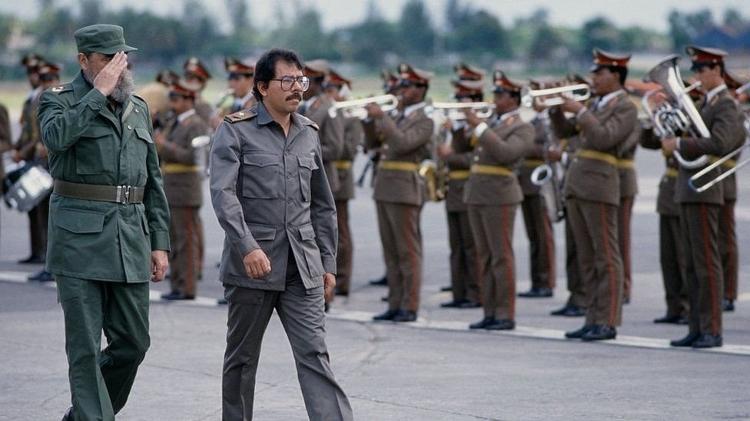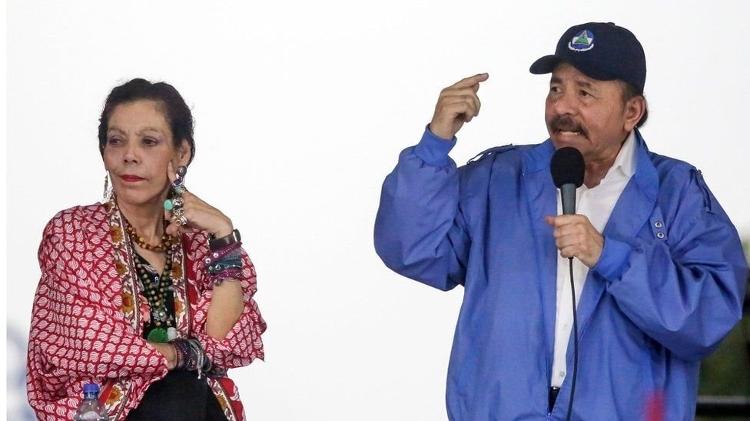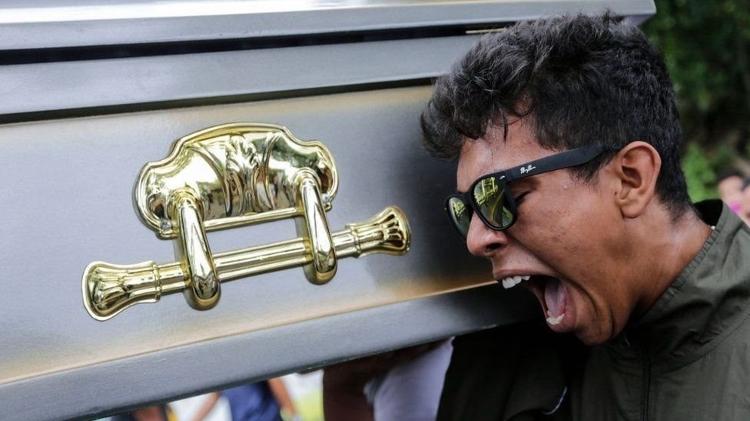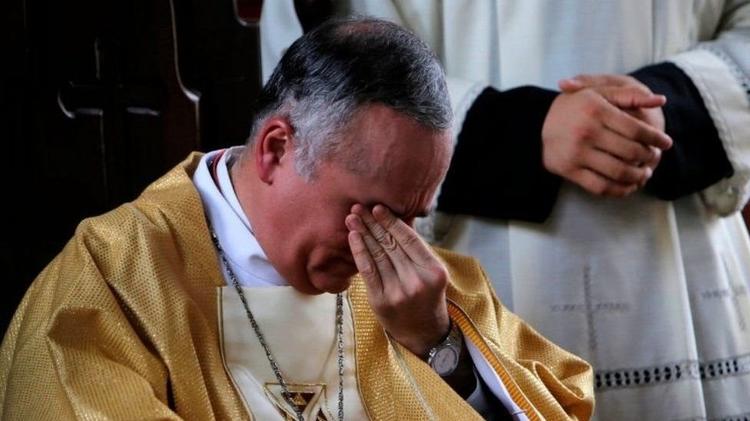After Jair Bolsonaro implied that Luiz Inacio Lula da Silva would follow in the footsteps of an ally who was oppressing Christians, it became increasingly mentioned in the October election campaign in Brazil of the former Sandinista guerrilla government and the current leader of Nicaragua.
Nicaragua has become a hot topic on Brazilian social media in recent days after President Jair Bolsonaro (PL), members of his party, and some of his supporters linked Daniel Ortega’s authoritarian government and cases of religious persecution in the country to the campaign. former president Luiz Inácio Lula da Silva (PT).
At an event attended by religious and evangelical believers in Juiz de Fora (MG) on Tuesday 16/8, Bolsonaro said Ortega was an “ally” of the PT and persecuted Christians in Nicaragua. The president even referred to Lula as “without conviction”.
- Watch Election Radar, a new video feed featuring behind-the-scenes information, nomination analysis, and voting intent polls
“We’re following what’s happening in other South American countries like Nicaragua, where Catholic radio stations are shut down, parades are blocked,” he said.
This Thursday (18/8), the son of president and senator Flávio Bolsonaro (PL) shared a post on his Twitter profile that also mentions the South American country. “A warning to Catholics and Evangelicals: Lula’s friend is arresting priests and closing churches in Nicaragua! Watchman!” he wrote.
- How Ortega Moved from Prudent Revolutionary to Iron Fist Ruler in Nicaragua
Lula stated on his Twitter page that he intends to “treat all religions with respect”. “Religion is for standing up for faith, not for doing politics. I campaign to respect religion and I don’t use God’s name in vain,” he wrote.
This is not the first time Bolsonaro and his allies have used the Daniel Ortega administration as an example of an undemocratic left.
The words of the government of the former Sandinista revolutionary began to take place more and more among the supporters of the current president’s campaign to attack the dissidents.
But after all, who is Ortega and what is his role in the current wave of repression in Nicaragua?
America’s oldest leader
Short stature and big square glasses, Daniel Ortega didn’t look like a typical soldier when he first caught the world’s attention in the 1980s.
However, as the leader of Nicaragua’s left-wing Sandinista revolution, he became known for overthrowing a dictator and later US-backed rebels who tried to thwart his legitimate pursuit of power.
40 years later, now in 2022, Ortega was sworn in for president for the fourth time in a row after winning the election in November last year.
The electoral process has been harshly criticized by the international community, which has been classified as “undemocratic”, “illegitimate” and “lacking credibility”. More than 30 opposition leaders were arrested, including seven presidential candidates who failed to run.
At the end of his current term, Ortega has been in power for 20 consecutive years. Counting other terms, he held the presidency of Nicaragua for a total of 29 years and is the longest-serving leader in the Americas.
He remains a true patriot for his supporters. With a mixture of respect and love, they call him Commander Daniel.
His critics, including many of his former allies, say he was a corrupt and authoritarian ruler who turned his back on his revolutionary ideals and was more and more like the dictator he helped dethrone.
revolutionary youth
The son of a shoemaker, Ortega was still a teenager when he joined the left-wing Sandinista National Liberation Front (FSLN).
The group fought against the dictatorship of Anastasio Somoza, whose family had ruled the country since 1936.
In the 1960s, the young man dropped out of law school to fully commit to the case. In his 20s, he robbed a bank branch in the capital, Managua, with a machine gun to raise money. He was arrested and severely tortured for seven years in prison.
Was he released early in 1974? with other sandinistas? in a hostage exchange. Accord demanded that he be sent to Cuba and used the opportunity to specialize in guerrilla tactics, and then returned to his homeland, where the peasant-led uprising was about to develop into a full-scale civil war.
The Sandinistas seized power in 1979, forcing President Somoza into exile. Ortega was named his successor in 1984 after serving on the Sandinistas’ five-member council of “national reconstruction”.
Most international observers considered the 1984 election free and fair, despite opposition complaints.
However, then US President Ronald Reagan described the election as “fake” and increased his support for the counter-revolutionary armed groups known as the Contras.
It was at the height of the Cold War when Washington saw the Sandinistas as a front for Soviet and Cuban communism and a threat to US-backed governments in Central America.
Tens of thousands of Nicaraguans died in the Contra war, and the International Court of Justice (ICJ) later ruled that the US had violated international law in its intervention.

Image: Getty Images
first drop
The first Sandinista government was criticized for its economic failures, although it made significant gains, particularly in health, education and agrarian reform.
The impact of the war with the contras and US sanctions made economic restructuring impossible.
In the 1990 presidential election, Ortega was defeated by liberal opposition candidate Violeta Chamorro, a former collaborator who broke with the increasingly radical Sandinistas and officially ended the war.
A combination of allegations of corruption and deep divisions within the Sandinista movement led to Ortega’s two more electoral defeats in 1995 and 2001.
Between the two campaigns, his stepdaughter Zoilamérica Narváez accused him of repeatedly raping her as a child.
Ortega refused to stand trial and avoided trial, asserting his immunity as a member of Congress. Wife Rosario Murillo -? A poet he met in prison? supported her, saying her daughter’s accusations were “shameful”.
Ortega and Murillo’s personal reputations suffered greatly from the scandal.

Image: AFP/GETTY IMAGES
Transformation
In 2006, Ortega made an unexpected comeback for that year’s presidential election campaign, saying he would seek foreign investment to alleviate widespread poverty, straying from his strong communist roots. Forbes ranks Nicaragua as the second poorest country in the Western Hemisphere.
In a campaign planned by his wife, the black and red Sandinista flags were largely replaced by pink campaign posters; The olive green military uniform was replaced by white collarless shirts, and Marxist slogans were replaced by a vague allegiance to “Christianity, Socialism and Solidarity”.
“Jesus Christ is now my hero,” he said in an attempt to engage in a dialogue with the more religious population.
Days before she was elected, she sparked even more controversy by stating that she would not be against a complete ban on abortion. The move garnered praise from Catholic and evangelical leaders, but angered liberal voters and human rights groups.
undemocratic developments.
In 2009, did the Nicaraguan Supreme Court remove the constitutional barriers that allowed Ortega to run for another term? a measure that the opposition has condemned as illegal.
Further constitutional changes were made to allow him to run for the third consecutive year in 2016.
Many boycotted the vote, saying it was unfair because the opposition was rejected. But Ortega insisted that the changes were necessary for the stability of the country.
He chose his wife as his wife in 2016. As vice president, Murillo is the better speaker of the couple and often gives long speeches on television.
2018 uprising
In April 2018, pro-government groups vigorously suppressed a small demonstration against reforms to Nicaragua’s pension system.
The outcry among critics of Ortega turned the movement into a popular call for his resignation.
As the violence continued, a college student came forward for calling Ortega the murderer in a televised debate.

Image: Getty Images
In July, human rights groups said the number of people killed in violence linked to the protests exceeded 300.
Ortega resisted calls for resignation or elections. Murillo attributed the crisis to “an invasion of evil spirits who want evil to reign in Nicaragua”.
religious persecution
More recently, accusations of persecution of the Catholic Church in the country have multiplied.
Tensions between the Daniel Ortega government and the institution have escalated since the clergy provided shelter to students who participated in the 2018 protests.
The Catholic Church in Nicaragua has suffered more than 190 attacks and desecrations in less than four years, according to a survey posted to Aid to the Church in Need (ACN) and published in July.
In 2019, Managua’s co-bishop, Silvio Báez, left the country after receiving several death threats.

Image: INTI OCON WITH GETTY IMAGES
In March this year, the government expelled the Apostolic Nuncio, the Catholic Church’s equivalent of an ambassador, in what the Vatican called an “unfair unilateral move”.
In July, the Missionary Sisters of Santa Teresa Charity, an order founded by Mother Teresa of Calcutta, were forced to leave the country after their organization was outlawed.
In addition, according to the official Vatican news agency, the bishop of the Diocese of Matagalpa (in the north of the country), Archbishop Álvarez and six priests have been prevented from leaving their diocese, where they have lived since August 4. Special forces. from the police.
President Ortega accused the Catholic clergy of being “putschists” and called them “sentence-clad demons”.
The presidency of the Brazilian National Conference of Bishops (CNBB) said that he sent a letter to Archbishop Carlos Enrique Herrera Gutiérrez, head of the Nicaraguan Episcopal Conference, to express his solidarity with the current situation of the Catholic Church in the country. .
“We feel deeply united with our fellow bishops and with all the people of Nicaragua,” CNBB said in the letter.
source: Noticias
[author_name]